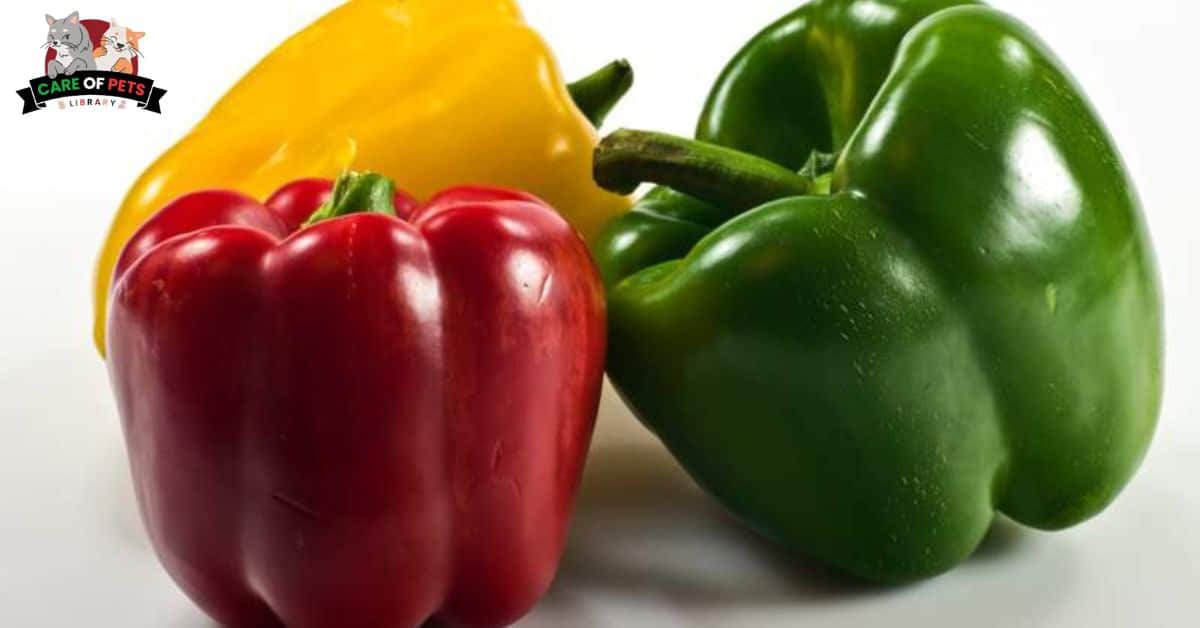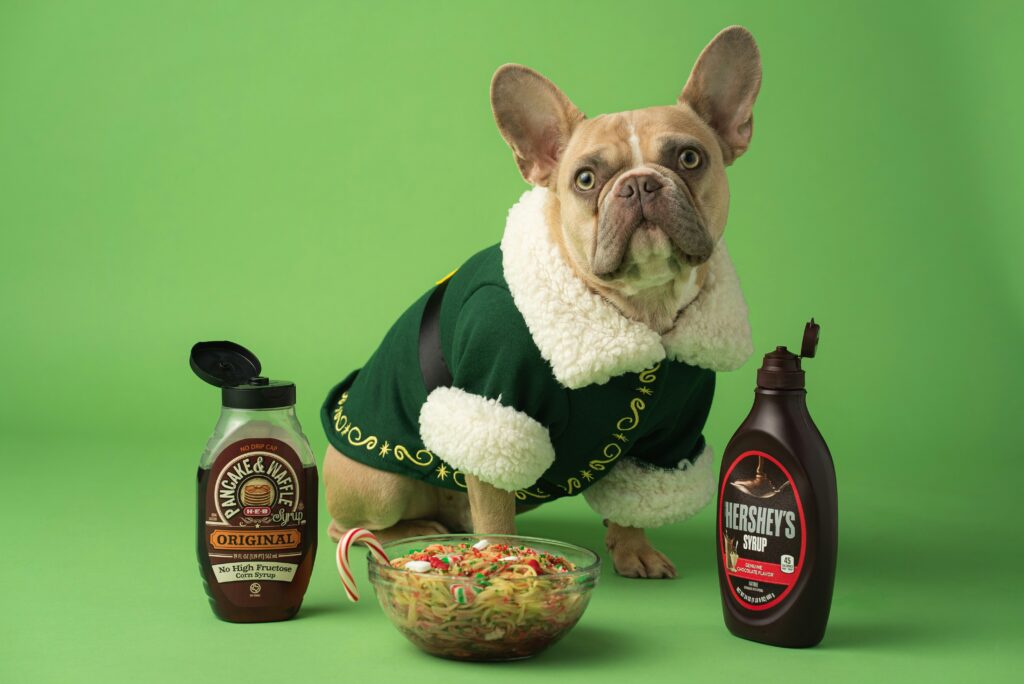Can Dog Eat Bell Pepper? Bell peppers as a potential treat for your canine companion! Discover the nutritional benefits and considerations for feeding bell peppers to dogs. Learn about the vitamins and antioxidants they offer, as well as important precautions to ensure your furry friend’s safety and well-being. Explore how to safely incorporate bell peppers into your dog’s diet for a tasty and nutritious snack option.
Can Dog Eat Bell Pepper?
Yes, bell peppers can be a nutritious treat for your furry friend when given in moderation. Bell peppers are an excellent source of essential vitamins, such as Vitamin A, Vitamin C, and Vitamin B6, which can benefit a dog’s eye health, coat health, and overall well-being.
They are also powerful antioxidants and provide anti-inflammatory properties. However, it’s crucial to avoid giving dogs hot peppers like chili peppers, cayenne peppers, or serrano peppers, as these can cause severe discomfort and digestive issues. Always serve bell peppers in bite-sized pieces, and opt for raw or cooked peppers without any seasoning.
While sweet bell peppers, including green bell peppers, yellow peppers, and red bell peppers, are safe, it’s best to introduce them gradually to prevent any potential adverse reactions, such as an upset stomach or allergic reactions. As with any human food, treat bell peppers as an occasional treat to supplement your dog’s regular dog food.
Are Bell Peppers Good for Dogs?
Absolutely! Bell peppers, especially sweet bell peppers like red, green, and yellow peppers, offer numerous health benefits for your furry friend. They are an excellent source of vitamins A, C, and B6, essential for maintaining eye health, coat health, and a strong immune system.
Raw bell peppers and cooked peppers can be a nutritious treat for dogs, providing a low-calorie food option packed with beneficial nutrients and antioxidants like beta-carotene. However, avoid hot peppers such as chili peppers and cayenne peppers, as these spicy peppers can cause severe gastrointestinal discomfort and upset stomach.
When introducing bell peppers, offer them in bite-sized pieces and monitor for any adverse reactions, like digestive issues or allergic reactions. Peppers in moderation can boost your dog’s regular dog food, adding a healthy treat to their diet without causing digestive upset. Always consult with a vet if you’re unsure about new human foods in your dog’s diet.
How to Safely Prepare Bell Peppers for Dogs?
Start by selecting fresh, sweet bell peppers like red, green, or yellow peppers, avoiding hot peppers such as chili peppers and cayenne peppers that can cause digestive discomfort. Wash the bell pepper thoroughly to remove any pesticides from the outer skin.

Remove the seeds and stem, as they can be choking hazards and might cause digestive issues. Cut the bell pepper into bite-sized pieces to make it easy for your furry friend to chew and digest. You can serve raw bell peppers or lightly cooked peppers without any added seasonings or oils.
Bell peppers are an excellent source of vitamins A, C, and B6, offering numerous health benefits for dogs, including improved eye health and coat health. Peppers in moderation can be a nutritious treat and provide essential nutrients without causing stomach upset. Always monitor for any adverse reactions and consult your vet if your dog has a sensitive stomach or existing health condition.
How to Introduce Bell Peppers to Your Dog’s Diet
- Starting Slowly: Begin by offering small pieces of bell pepper to see how your dog reacts. Monitor for any signs of digestive upset or allergies.
- Serving Sizes: A few small pieces or slices are enough for most dogs. Adjust the serving size based on your dog’s size and nutritional needs.
- Best Ways to Serve Bell Peppers: You can serve bell peppers raw, steamed, or lightly cooked. Avoid adding any seasoning, oils, or other additives that could be harmful to your dog.
How Many Bell Peppers Should Your Dog Eat?
While bell peppers are a nutritious treat for dogs, they should be given in moderation. For small dogs, one to two bite-sized pieces of raw bell peppers or cooked peppers a few times a week are sufficient. Medium to large dogs can have slightly more, but always avoid overfeeding to prevent digestive issues like stomach upset.
Bell peppers, especially sweet bell peppers like green, red, and yellow peppers, are an excellent source of vitamins A, C, and B6, offering numerous health benefits including improved eye health and coat health. However, avoid spicy peppers such as chili peppers and cayenne peppers, as these can cause severe discomfort and gastrointestinal discomfort.
Always introduce new human foods gradually to monitor for any adverse reactions, and consult your vet if your furry friend has a sensitive stomach or pre-existing health condition. Use bell peppers as an occasional treat, supplementing their regular dog food with this healthy treat option.
What Benefits of feeding bell peppers to dogs?
Bell peppers are packed with nutritional benefits for your furry friend. They are an excellent source of vitamins A, C, and B6, which contribute to eye health, coat health, and overall well-being.

Raw bell peppers and cooked peppers can be a healthy treat for dogs, providing essential vitamins and antioxidants like beta carotene that support a strong immune system and healthy skin. Bell peppers also have anti-inflammatory properties, helping to reduce inflammation and promote better health. Unlike hot peppers such as chili peppers and cayenne peppers, sweet bell peppers are safe and beneficial when fed in moderation.
Offering bell peppers in bite-sized pieces can prevent any digestive upset or adverse reactions. Peppers in moderation can enhance your dog’s regular dog food with a low-calorie, nutritious treat option, making it a perfect occasional treat for boosting their intake of essential nutrients. Always monitor for any negative reactions, especially if your dog has a sensitive stomach.
How to Safely Prepare Bell Peppers for Dogs in 4 Steps
- First. Select fresh bell peppers, avoiding hot peppers like chili peppers and cayenne peppers that can cause severe discomfort.
- Second. Wash the bell pepper thoroughly to remove any pesticides from the outer skin.
- Third. Remove the seeds and stem, as these parts can cause digestive issues or choking hazards for your furry friend.
- Finally. Cut the bell pepper into bite-sized pieces to ensure easy chewing and digestion. Raw bell peppers or lightly cooked peppers without seasoning are both suitable options.
Bell peppers are an excellent source of essential vitamins such as vitamin A, vitamin C, and vitamin B6, providing numerous health benefits like improved eye health, healthy skin, and a strong immune system.
Always introduce bell peppers gradually and monitor for any adverse reactions, particularly if your dog has a sensitive stomach. Peppers in moderation can be a nutritious treat that enhances your dog’s regular food without causing digestive upset.
What Parts Of A Pepper Can Dogs Eat?
Dogs can safely eat the flesh of bell peppers, including the outer skin and inner flesh, as long as they are fresh and free from any seasoning or spice. Sweet bell peppers, such as green, red, and yellow peppers, are the best options for dogs due to their mild flavor and high nutritional value.
However, it’s essential to avoid feeding dogs the seeds and stem of the pepper, as these parts can pose choking hazards and may cause digestive discomfort. Bell peppers are an excellent source of essential vitamins like vitamin A, vitamin C, and vitamin B6, which promote eye health, coat health, and overall well-being in dogs.
Introduce bell peppers gradually into your dog’s diet, starting with small amounts to ensure they tolerate them well. Always monitor for any signs of digestive upset or allergic reactions, and consult with your veterinarian if you have any concerns about feeding bell peppers to your furry friend.
Does the Color of the Bell Pepper Matter?
Yes, the color of the bell pepper can indicate its ripeness and nutritional content, which can affect its benefits for dogs. While all bell peppers, regardless of color, are safe for dogs to eat, different colors may offer slightly different nutritional profiles.
For example, red bell peppers are the ripest and tend to have the highest concentration of vitamins, including vitamin A and vitamin C. Yellow and orange bell peppers also contain significant amounts of these vitamins, while green bell peppers are typically less ripe and may have a slightly milder flavor.
However, all colors of bell peppers provide essential nutrients and antioxidants that can support your furry friend’s overall health. When feeding bell peppers to your dog, you can choose any color based on availability and your dog’s preferences, ensuring they receive a variety of beneficial nutrients.
When to Not Feed Bell Peppers to Dogs?
While bell peppers can be a healthy treat for most dogs, there are situations where you should avoid feeding them to your furry friend.
- Firstly. if your dog has sensitive stomach or digestive issues, introducing bell peppers may exacerbate their symptoms and cause discomfort.
- Additionally. if your dog has shown allergic reactions to other human foods or vegetables in the past, it’s best to err on the side of caution and avoid feeding them bell peppers.
- Furthermore. if your dog has a known health condition that may be aggravated by certain foods, such as pancreatitis or gastrointestinal issues, it’s advisable to consult with your veterinarian before introducing bell peppers into their diet.
- Lastly. if the bell peppers are spicy or hot varieties like chili peppers or cayenne peppers, it’s crucial to steer clear, as these can cause severe gastrointestinal upset and discomfort in dogs.
Always prioritize your dog’s well-being and consult with a vet if you have any concerns about feeding them bell peppers.
Are Peppers Safe for Dogs?
Yes, peppers can be safe for dogs when given in moderation and prepared properly. Bell peppers, especially sweet varieties like green, red, and yellow peppers, are low in calories and high in essential vitamins such as vitamin A, vitamin C, and vitamin B6, which can benefit a dog’s overall health, including eye health, coat health, and immune system function.
However, it’s important to avoid feeding dogs spicy peppers like chili peppers and cayenne peppers, as these can cause digestive upset and discomfort. Additionally, always remove the seeds and stems from the peppers before giving them to your furry friend, as these parts can pose choking hazards.
Introduce peppers gradually into your dog’s diet and monitor for any adverse reactions, such as signs of digestive discomfort or allergic reactions. As with any new food, consult with your veterinarian if you have any concerns about feeding peppers to your dog.
Can Dogs Eat Red and Yellow Peppers?
Yes, dogs can eat both red and yellow peppers in moderation. These sweet bell peppers are safe for dogs and provide a range of nutritional benefits.

Red peppers, in particular, are rich in vitamin C and beta-carotene, which promote a healthy immune system and can contribute to eye health.
Yellow peppers also contain essential vitamins and antioxidants that support overall well-being. When feeding red or yellow peppers to your furry friend, it’s important to remove the seeds and stem to prevent any choking hazards. Additionally, it’s best to offer the peppers in bite-sized pieces to make them easier to chew and digest.
While these peppers are generally safe for dogs, it’s essential to introduce them gradually into your dog’s diet and monitor for any signs of digestive upset or allergic reactions. As always, consult with your veterinarian if you have any concerns about feeding peppers to your dog.
Conclusion
In summary, bell peppers can be a nutritious treat for dogs when given in moderation. They offer essential vitamins and antioxidants that promote overall health. However, it’s crucial to avoid spicy varieties and always remove seeds and stems. Monitor for any adverse reactions and consult a veterinarian if needed. With care, bell peppers can be a flavorful and beneficial addition to your dog’s diet.
For More Information
We have a ton of information regarding what foods, from popular snacks to fruits, are healthy or harmful for your dog. You might also be interested in ”Can Dog Eat Beans“
FAQ
Which color bell pepper is the healthiest?
Because they have spent the most time on the vine, red peppers are the healthiest. Bell peppers are available in a variety of hues, with the tastiest being red, followed by orange, yellow, and green.
Why can’t dogs eat bell peppers?
Although adding a lot of bell peppers to your dog’s food might be beneficial, giving them too much can cause upset stomach, diarrhea, or vomiting. You should cease giving bell peppers to your dog if they become ill from eating them.
What happens if a dog eats a bell pepper?
Are dogs okay to eat bell peppers? Bell peppers are harmless, non-toxic, and beneficial to dogs’ health, thus the answer is yes. It’s okay for your dog to eat the bell pepper and its seeds. Before offering a portion to your pet, it is recommended to remove the stem and any leaves.













